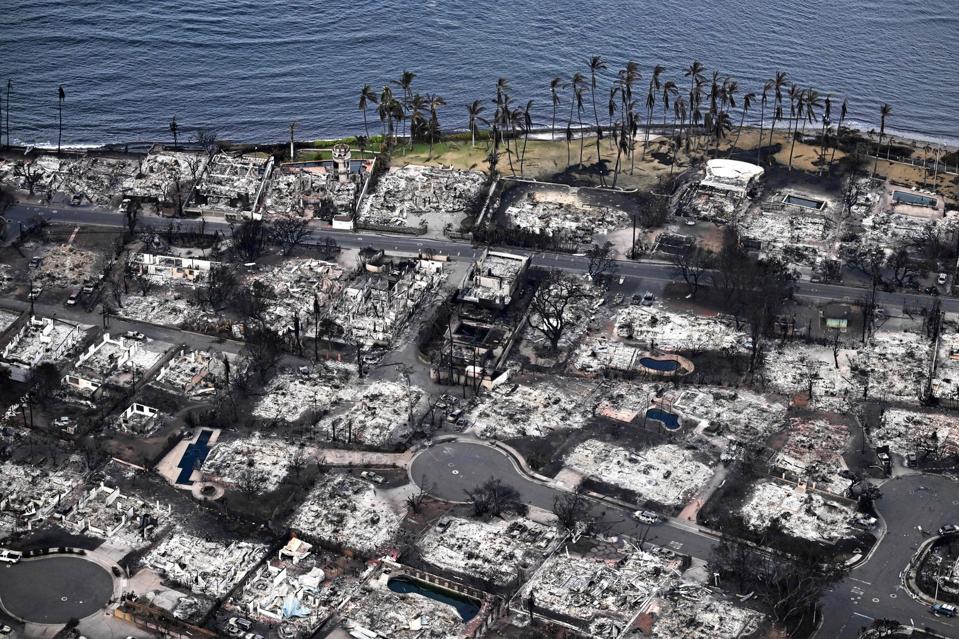The IRS has further extended tax relief for Hawaii wildfire victims, so 2023 returns, payments and other deadlines are postponed to Aug. 7, 2024. Previously, the deadline was Feb. 15, 2024. Affected individuals, businesses and tax-exempt organizations have until Aug. 7, 2024, to file their 2023 returns and pay any taxes due. This is in addition to the expansive relief, announced last August, shortly after the wildfires occurred. The relief applies to Maui and Hawaii counties, the two areas designated by the FEMA. Individuals and households that reside or have a business in these localities qualify for tax relief. The current list of eligible localities is always available on the Tax relief in disaster situations page on IRS.gov.
The Aug. 7, 2024, deadline will now apply to:
- Individual income tax returns and payments normally due on April 15, 2024.
- 2023 contributions to IRAs and health savings accounts for eligible taxpayers.
- Quarterly estimated income tax payments normally due on Sept. 15, 2023, and Jan. 16, April 15 and June 17, 2024.
- Quarterly payroll and excise tax returns normally due on Oct. 31, 2023, and Jan. 31, April 30 and July 31, 2024.
- Calendar-year partnership and S corporation returns normally due on March 15, 2024.
- Calendar-year corporation and fiduciary returns and payments normally due on April 15, 2024.
- Calendar-year tax-exempt organization returns normally due on May 15, 2024.
Plus, individuals, businesses and tax-exempt organizations who had valid extensions to file their 2022 returns also now have until Aug. 7, 2024, to file them. However, payments on these returns are not eligible for relief because they were originally due before the wildfires occurred. The Disaster assistance and emergency relief for individuals and businesses page has details on other returns, payments and tax-related actions qualifying for relief during the postponement period.
The IRS automatically provides filing and penalty relief to any taxpayer with an IRS address of record located in the disaster area. These taxpayers do not need to contact the agency to get this relief. It is possible an affected taxpayer may not have an IRS address of record located in the disaster area, for example, because they moved to the disaster area after filing their return. In these kinds of unique circumstances, the affected taxpayer could receive a late filing or late payment penalty notice from the IRS for the postponement period. The taxpayer should call the number on the notice to have the penalty abated or call the IRS at 866-562-5227 to receive disaster tax relief.
The IRS says it will work with any taxpayer who lives outside the disaster area but whose records necessary to meet a deadline occurring during the postponement period are located in the affected area. Taxpayers qualifying for relief who live outside the disaster area need to contact the IRS at 866-562-5227. This also includes workers assisting the relief activities who are affiliated with a recognized government or philanthropic organization.
Extensions. Anyone who needs an additional tax-filing extension, beyond Aug. 7, 2024, for their 2023 federal income tax return should request it electronically by April 15, 2024. Though a disaster-area taxpayer qualifies to request an extension between April 15 and Aug. 7, 2024, a request filed during this period can only be submitted on paper. Whether requested electronically or on paper, the taxpayer will then have until Oct. 15, 2024, to file, though payments are still due on Aug. 7, 2024. Visit IRS.gov/Extensions for details.
Additional tax relief. Individuals and businesses in a federally declared disaster area who suffered uninsured or unreimbursed disaster-related losses can choose to claim them on either the return for the year the loss occurred (in this instance, the 2023 return normally filed this year), or the return for the prior year (2022). Taxpayers have extra time – up to six months after the due date of the taxpayer’s federal income tax return for the disaster year (without regard to any extension of time to file) – to make the election. For individual taxpayers, this means Oct. 15, 2024. Be sure to write the FEMA declaration number – 4724-DR − on any return claiming a loss. See Publication 547, Casualties, Disasters, and Thefts, for details.
Qualified disaster relief payments are generally excluded from gross income. In general, this means that affected taxpayers can exclude from their gross income amounts received from a government agency for reasonable and necessary personal, family, living or funeral expenses, as well as for the repair or rehabilitation of their home, or for the repair or replacement of its contents. See Publication 525, Taxable and Nontaxable Income, for details.
Additional relief may be available to affected taxpayers who participate in a retirement plan or individual retirement arrangement (IRA). For example, a taxpayer may be eligible to take a special disaster distribution that would not be subject to the additional 10% early distribution tax and allows the taxpayer to spread the income over three years. Taxpayers may also be eligible to make a hardship withdrawal. Each plan or IRA has specific rules and guidance for their participants to follow.
The tax relief is part of a coordinated federal response to the damage caused by these wildfires and is based on local damage assessments by FEMA. For information on disaster recovery, visit disasterassistance.gov.

